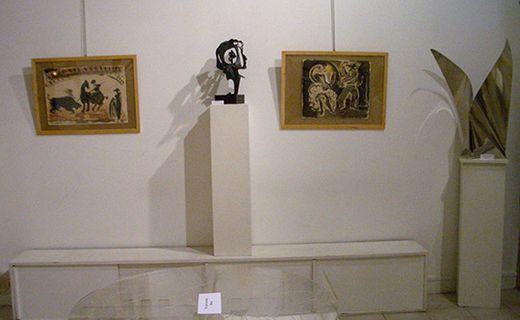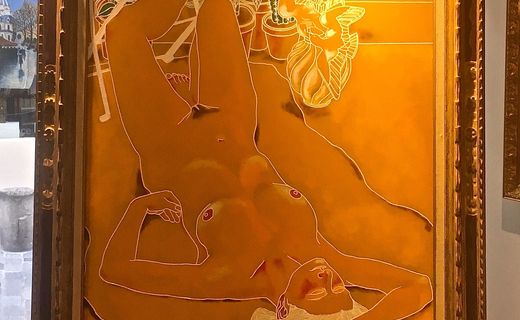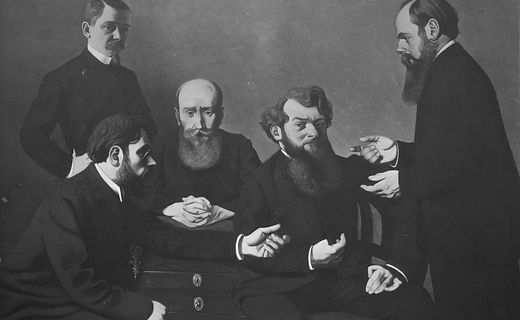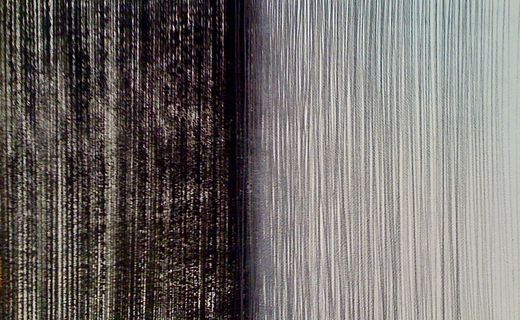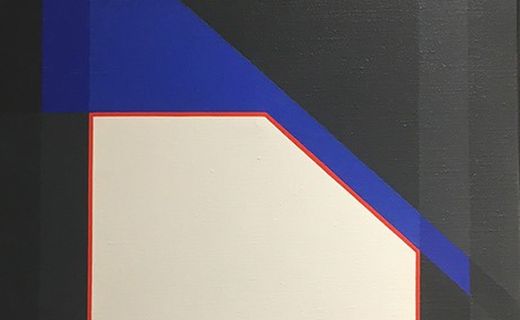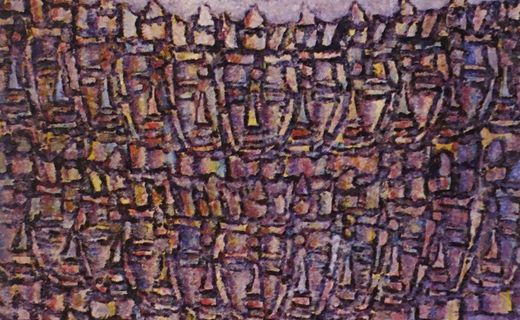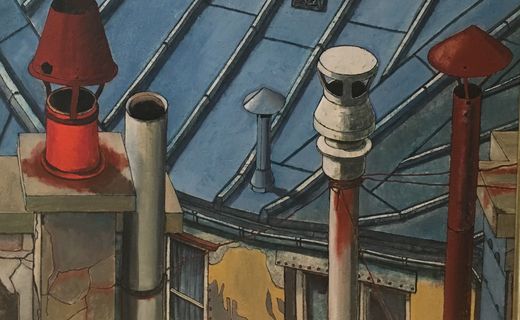Art of Printing
From ancestral to digital
Lise Cormery presents to you in her gallery the mystically inspired lithographs of Salvador Dali (1904-1989). The ‘Songs of Songs of King Solomon’, ‘The Voice of my Beloved’, ‘Your Eyes are Doves’. As well as ‘The Christ of Saint John of the Cross’, ‘The Angel of Port Ligat’, ‘Saint George and the Dragon’, and in the surrealist Montres Molles series, the ‘Persistence of Memory’.
On the Artsper website you can discover the exhibition of prints by Joze Ciuha (1924-2015) by art master Fiorenzi Fallani from Venice (1934-2014) with his silkscreen prints mounted on velvet and gold leaf or silver that interpret paintings from the Byzantine period of Ciuha.
Likewise, you can discover prints and drawings by international artists, mainly from the Post-War Paris School (1945-1999) on Artsper.
As we can see, the different techniques summarized below and the various nationalities allow the creativity of international artists to give free rein to their imagination and to invent a universe that is entirely personal to them.
The different biographies of Lise Cormery written for her artists on Artsper allow us to situate the specific research of each artist, whether figurative or abstract, lettrist like Scapagna, geometric like Moon Shin, folkloric or mystical like Joze Ciuha, or historical like Rops , Laurencin, Leonor Fini, etc.
“The art of Printmaking and its techniques, by Lise Cormery
The print is a general term to designate the result of a printing allowing the transfer of a graphic design on a flexible support, generally paper, in several copies, hence the notion of original and multiple work apparently contradictory because the original print is thus dated, numbered and signed. The more the number of copies is limited, the more the quality of the work is respected.
Lithography
We use a limestone, a flat matrix (plate), with fine grain, previously wetted and on which we draw with oily ink, acidulating the rest of the stone to make it hydrophilic, the impression of the ink does not deposit only on the fatty parts, we play on the repulsion between oil and water. This process is at the origin of the simplified offset technique.
Screen printing
Derived from the stencil, it allows you to reproduce a drawing or painting using a special fabric (silk, nylon) stretched in a frame. Part of the fabric is sealed with varnish except on the surfaces corresponding to the design to be printed. The die (plate) is flat.
Savings size
When the printer surfaces protrude, this is a “saving size” since these surfaces are spared and the parts of the plate located around are hollowed out. We mainly use wood but also linoleum and plastic. Engraving with relief matrix (plate).
Wire wood
If the wooden plate is cut in the direction of the fibers and the trunk of the tree, it is grain wood, it is in this form that engraving originated in China in the 5th century and gained popularity. In the West in the 15th century, it was then called xylography. This process would be at the origin of typography, engraving with a matrix (plate) in relief.
End grain
If the wooden plate is cut perpendicular to the trunk of the tree, it is end grain. In saving size, the engraver is a blank creator. Engraving with relief matrix (plate).
Engraved wood
This is the oldest printmaking process, used in China and the Orient since the 5th century. This technique only appeared in the West a millennium later. Wood is used as the material for relief engraving, called saving size. In engraved wood, we distinguish engraved wood, also called grain wood, the grain being parallel to the surface of the board, and wood engraving, also called end grain or standing wood because the grain is perpendicular to the surface of the board. The reserved parts of the wood block hold the ink. The engraver clears the line using a point, a type of penknife mounted on a cylindrical handle, the hollows are then hollowed out with clasps, which are small scissors, and with gouges of different sizes. Mrs Jean Lodge, master engraver, creates small woodcuts or an exceptional monumental woodcut at the Paris Arts Olympiad.
Soft waist
In intaglio, the engraver is a creator of black. When the printing surfaces are recessed, this is “intaglio size”, unlike the economy size, the printing surfaces are hollowed out; When printing, to get the ink from the bottom of the furrows formed, strong pressure must be used which leaves a trace in the form of a characteristic bowl. This process is at the origin of photogravure. Engraving with matrix (relief plate).
The chisel
We use this tool, which is a metal blade inserted intoa wooden handle and on the other side, bevelled and very sharp, pushing it with one hand to dig a furrow, the other hand turns the metal plate placed on a movable cushion. We obtain a clean and powerful line.
The dry point
We use a sharp steel point, with a perfectly conical section, we hold the tool perpendicular to the plate which is fixed and we engrave a line in all directions; we create beards projecting from the plate and the line presents irregularities. When printed, the beards retain the ink and form a halo along the line. We obtain violent blacks and nuanced light parts. Drypoint gives a watercolor or charcoal look.
Black manner or Mezzotint
The great Master was Mario Avati, who during his lifetime had several volumes of his Catalogs Raisonné listing his important Opus, exhibited at the Galerie Lise Cormery and at the Fiac Saga. We first use a cradle which is an arcuate metal blade with rough edges on its bevel which is balanced for a long time on the plate to obtain a fine and regular graining. Mario Avati confided to me that despite his great experience and his important work, he had to work forty hours to obtain a deep black. When printed, we obtain an intense black. Then, with a burnisher or blunt point, we crush the grains on the plate to obtain grays and with a scraper we remove these grains to obtain whites. There is an inversion of values, because after creating black, the engraver creates white.
Etching
On the plate, covered with varnish, we engrave with a steel point in the layer of varnish, to discover the metal which is bitten when the plate is immersed in the acid. The line obtained is regular and depends on the thickness of the furrow and the duration of the bite. Etching gives the appearance of a hard pencil or pen drawing.
Aquatint
Resin dust is projected onto the plate and the acid only digs between the particles. The shades of gray are obtained by playing on the fineness of the grains and the duration of the bite. It is no longer a line that is obtained but a solid color (surface). This solid color is irregular.
Soft varnish
We draw on a rough paper placed on a plate covered with a tallow varnish, this is removed at the points of contact, we then obtain the appearance of a pencil or graphite drawing.
Sugar engraving
We draw on the plate with a mixture of Indian ink and sugar which we cover with a varnish. Immersed in water, the sugar melts and the metal is exposed.
Mixed media.
Juxtaposition on the same print of several techniques described above, notably intaglio.
Hayter technique
Similar to etching and aquatint. Inks of different viscosities are used to make color prints with a single plate. We practically end up with monotypes if the artist takes care not to make several.
Goetz technique
For painters, engraving with carborundum, a very hard metal, in powder form, projected projecting onto the printing support, resembling a low relief saving size but also aquatint, certain grains giving non-granulated flat areas .
Linocut
Engraving on linoleum based on linseed oil which contains cork powder, gum and resin, all compressed on burlap making up a plate a few millimeters thick. It is easy to engrave in all directions, unlike wood.
Digigraphy, digital print and “Giclée”
This technique from the end of the 20th century with an Iris printer could revolutionize the art of printmaking. From a computer we digitize the work into a computer file then onto a matrix, which will necessarily be a very high definition printer and not an office printer.
The British musician Graham Nash born in 1942, known for his famous folk and rock group, Crosby, Stills & Nash, is at the origin of the experiment with “giclée” engraving. Art photographer, in search of a perfect print he created Editions Nash which uses the most advanced techniques from the end of the 80s using an IRIS digital printer with four spray nozzles to “squirt” the ink only on very high quality Arches paper made in France. Its Nash editions are also the pioneers of art printing on very high definition large format IRIS printers.
As in any quality print technique, the artist and, if this is the case, his printer undertake to destroy the file (the matrix) after the creation of the print, to check it, sign it and numbered with very small editions. Artists from Editions Nash will use this technique from the end of the 20th century which is now very well known and mainly
Read more

